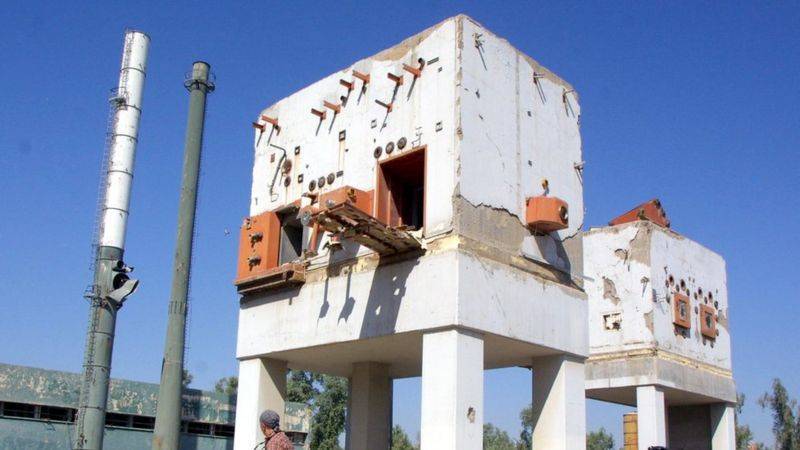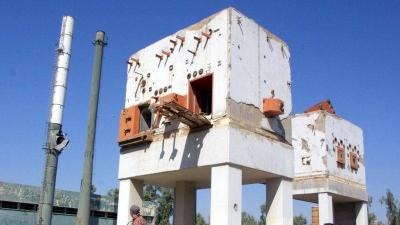At the beginning of this year, Israel vowed to address the Iranian nuclear project through several scenarios aimed at curbing Iran's nuclear ambitions. Execution followed several months later in April when the Natanz reactor was targeted in an explosion that Iran claims was carried out by a Mossad agent who escaped. The world holds its breath whenever both parties exchange threats, fearing that the matter may escalate into direct military action, reminiscent of the scenario executed by Israel forty years ago in Iraq.
How did Israel eliminate the Iraqi nuclear project in its infancy? On June 7, 1981, eight Israeli F-16 aircraft bombed the Osirak reactor (known as "Tamuz" in Iraq) after then-Prime Minister Menachem Begin deemed it a potential threat to Israeli security. Israel revealed scattered details about Operation "Opera" or "Operation Babylon" in 2015 and 2018, noting that discussions about targeting the reactor began upon its establishment in 1976 but were contingent upon gathering sufficient information. Former Mossad chief Shabtai Shavit mentioned in 2018 that one of the Israeli agents was present near the reactor on the morning of the bombing to report on the weather conditions that day.
The reactor was built in 1976 in the Tuwaitha area, 17 kilometers from Baghdad, and was surrounded by a massive earthen berm for protection. This followed a visit by a delegation of Iraqi nuclear scientists to France to purchase the Tamuz-1 reactor, which had a capacity of 40 megawatts, along with a smaller reactor, Tamuz-2, with a capacity of half a megawatt. The late Iraqi President Saddam Hussein sent many scientists and technicians to France for training on operating the reactor. He also brought in foreign experts to supervise its installation and operation, including Egyptian scientist Yahya El Mched, who was assassinated in June 1980, with Israel being suspected as one of the project's opponents.
The fuel for both reactors was enriched uranium, allowing for the development of nuclear weapons. At that time, Iraq imported hundreds of tons of uranium in various forms from Portugal, Niger, and Brazil. In 1979, Iraq contracted to purchase a plutonium separation device from Italy, increasing Israel's alarm. Iraq claimed that the new nuclear energy was for peaceful purposes. To ensure this, France altered the type of fuel used in both reactors, reducing the content from 80% to a weaker fuel of no more than 18%, aiming to inhibit Iraq's ability to produce nuclear weapons.
After years of military preparation and training, and following Begin's re-election in 1981, the decision to target the reactor was made after intelligence was gathered via agents within Iraq, some of whom were foreign workers at the reactor itself. On the morning of June 7, just a day before the reactor's official opening, Israeli aircraft flew over the Tamuz-1 reactor and dropped a series of bombs that destroyed its core. The smaller Tamuz-2 reactor was not targeted.
According to information published by Yedioth Ahronoth in 2015 about this attack, the planes launched from a military base in Taba, in the Sinai Peninsula, which was under Israeli control at the time. They flew stealthily over Saudi Arabia at low altitudes to evade radar detection. The newspaper reported that Israeli concerns began in 1974 when Saddam considered the project, especially after accumulating intelligence suggesting that Iraq could develop a nuclear weapon within seven years of operating the reactor. Israel even attempted to target the Tamuz reactor before 1979 through an explosion executed by an agent, but the impact was temporary and did not cripple operations at the reactor.
On June 19, the UN Security Council issued Resolution 487 condemning the Israeli attack on Iraq and its peaceful nuclear facility, affirming Iraq's right to compensation for the material and human damages. Iraq's nuclear ambitions did not end there, especially during the Iran-Iraq War, but they never reached the scale of the reactor destroyed by Israel. With the expulsion of UN inspectors and the imposition of economic sanctions on Iraq in the 1990s, hopes of developing nuclear facilities diminished, leading to the realization that Iraq had no nuclear activities following the US invasion in search of weapons of mass destruction in 2003.
What about Iran? Ironically, the aircraft used in Operation "Opera" were originally intended for Iran. Shah Mohammad Reza Pahlavi had signed a deal to purchase them from the United States, but the Islamic Revolution prevented their delivery to Iran, ultimately benefiting Israel instead. Israeli officials are not shy about expressing the possibility of military action against Iran. Prime Minister Benjamin Netanyahu himself has hinted multiple times at the likelihood of an air operation targeting Iranian nuclear facilities, similar to what Begin did, once in 2005 and again in 2012.
However, observers dismiss the possibility of such direct confrontation, as Iran today is not like Iraq of the past. The Iraqi nuclear project was nascent and had not become operational yet, under strict supervision from international inspectors and French experts. In contrast, Iran's project appears highly advanced compared to Iraq's, with completed infrastructure for its reactors and sufficient uranium enrichment levels for weapon production.
The Trump administration's withdrawal from the Iranian nuclear agreement in 2018 allowed Iran to continue enrichment operations away from the agreement's constraints. In response to the American stance, Iran announced the operation of advanced centrifuges, resuming enrichment up to 20 percent and building a stockpile of such materials. Currently, Iran receives support from Russia and China, while the Eastern bloc at the time of developing the Iraqi project was weak during the Cold War, facilitating pressure on Iraq.
Nevertheless, this does not grant complete immunity to Iranian nuclear facilities, as Israel attempts sabotage operations without direct military intervention, the latest being the assassination of Iranian nuclear scientist Mohsen Fakhrizadeh earlier this year, followed by the explosion at the Natanz facility in April. Iran, for its part, remains enthusiastic and determined to develop its nuclear capabilities, stating after the Natanz explosion that it would complete the enrichment of uranium there within nine months.




